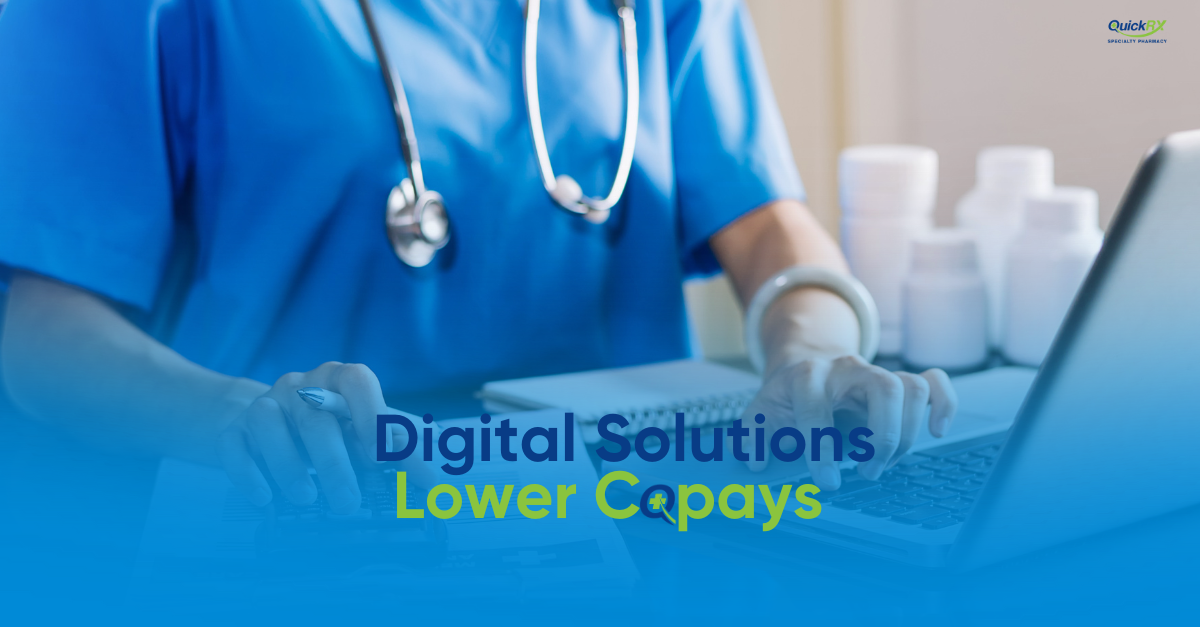How Technology Helps Patients Afford Specialty Medications
The cost of specialty drugs continues to rise, placing a heavy burden on patients with chronic or complex conditions. Specialty pharmacies use technology to reduce copay burdens and help patients afford life-saving medications. For many people undergoing treatment for cancer, multiple sclerosis, or autoimmune disorders, the question is not whether their medication works, but whether they can afford to fill it.
Specialty pharmacies play a critical role in solving this challenge. By combining healthcare technology with personalized patient support, they help thousands of Americans access affordable specialty medications each year.
The High Cost of Specialty Medications
Specialty drugs represent only a small percentage of prescriptions but account for nearly 50% of all U.S. prescription spending (ASPE, 2024).
The annual cost for many therapies exceeds tens of thousands of dollars per patient, and medications like abiraterone (Zytiga) for prostate cancer can reach several thousand dollars per month without financial help (GoodRx Health).
A national KFF Health Poll (2024) found that almost half of adults struggle to pay for their prescriptions, and many skip or delay doses due to cost (KFF). Missed treatments lead to poorer outcomes and higher long-term healthcare costs.
How Specialty Pharmacies Use Technology to Reduce Copay Burdens
Technology transforms how pharmacies identify, process, and manage copay assistance for patients. Modern specialty pharmacies use healthcare IT systems that integrate insurance verification, financial screening, and digital communication to improve speed and accuracy.
1. Intelligent Eligibility Screening
Advanced platforms analyze patient insurance, diagnosis, and medication data to identify available copay cards, foundation grants, and state assistance programs. This saves patients days or weeks of research and ensures faster enrollment.
2. Automated Application Processing
Electronic signatures, document uploads, and automated data population help patients complete applications quickly and accurately. These tools reduce manual paperwork and shorten approval times, helping patients start treatment sooner.
3. Real-Time Benefit Verification
Pharmacies use real-time verification systems to calculate what patients will owe after insurance and assistance. Accurate cost estimates improve financial transparency and medication adherence.
4. Secure Digital Communication
Secure messaging and patient portals keep all parties informed. Patients receive real-time updates about copay approvals, renewals, or funding changes, improving satisfaction and continuity of care.
Data Analytics: Turning Information Into Patient Support
Data analytics helps specialty pharmacies identify trends, predict program availability, and improve success rates.
- Trend tracking anticipates when funding programs might close.
- Denial analysis identifies and corrects common application errors.
- Outcome measurement tracks adherence and cost savings, supporting value-based care.
A 2023 AJMC study found that copay assistance programs significantly improve adherence and persistence for patients on high-cost specialty drugs (AJMC).
Technical and Compliance Challenges
Specialty pharmacies must maintain strict standards for data privacy and HIPAA compliance, ensuring that sensitive medical and financial information is protected.
They also face ongoing challenges integrating multiple systems and keeping databases updated as pharmaceutical manufacturers and foundations modify eligibility criteria or funding rules. Continuous monitoring ensures patients receive accurate, up-to-date assistance options.
Human Expertise Still Matters
While technology streamlines the process, human support remains essential. Trained financial assistance specialists interpret complex program requirements, communicate with administrators, and guide patients through stressful financial decisions.
The most effective specialty pharmacies combine automation with compassionate service, ensuring that every patient receives personalized care and financial support.
Measuring Success: Beyond Cost Savings
The true success of copay assistance technology is measured in outcomes such as:
- Improved medication adherence and persistence
- Faster time to therapy initiation
- Higher patient satisfaction
Research from the NIH National Library of Medicine shows that patients receiving copay support are more likely to remain on treatment and achieve better clinical results compared with those who do not receive assistance.
The Future of Copay Assistance Technology
Emerging innovations will make financial assistance even more accessible:
- AI and machine learning for predictive eligibility screening
- Blockchain for secure, decentralized data sharing
- Mobile apps for patient-driven management of renewals and alerts
As these tools evolve, they will strengthen the link between technology, patient advocacy, and access to care.
Conclusion
Technology is reshaping the way specialty pharmacies reduce patient copay burdens. By combining automated systems, secure communication tools, and expert human support, these pharmacies are improving access to life-changing medications for patients across the United States.
The ultimate goal remains ensuring that no patient delays or skips therapy because of cost. With ongoing advances in healthcare IT and patient support, that goal is closer to reality every day.
About the Author
Paola Larrabure is the Marketing Director at QuickRx Specialty Pharmacy, where she leads educational content initiatives that help patients understand and access financial assistance for specialty medications. Working closely with Head Pharmacist Julia Kravstova, she develops strategies that combine patient education, digital communication, and healthcare advocacy.
Connect with Paola on LinkedIn


